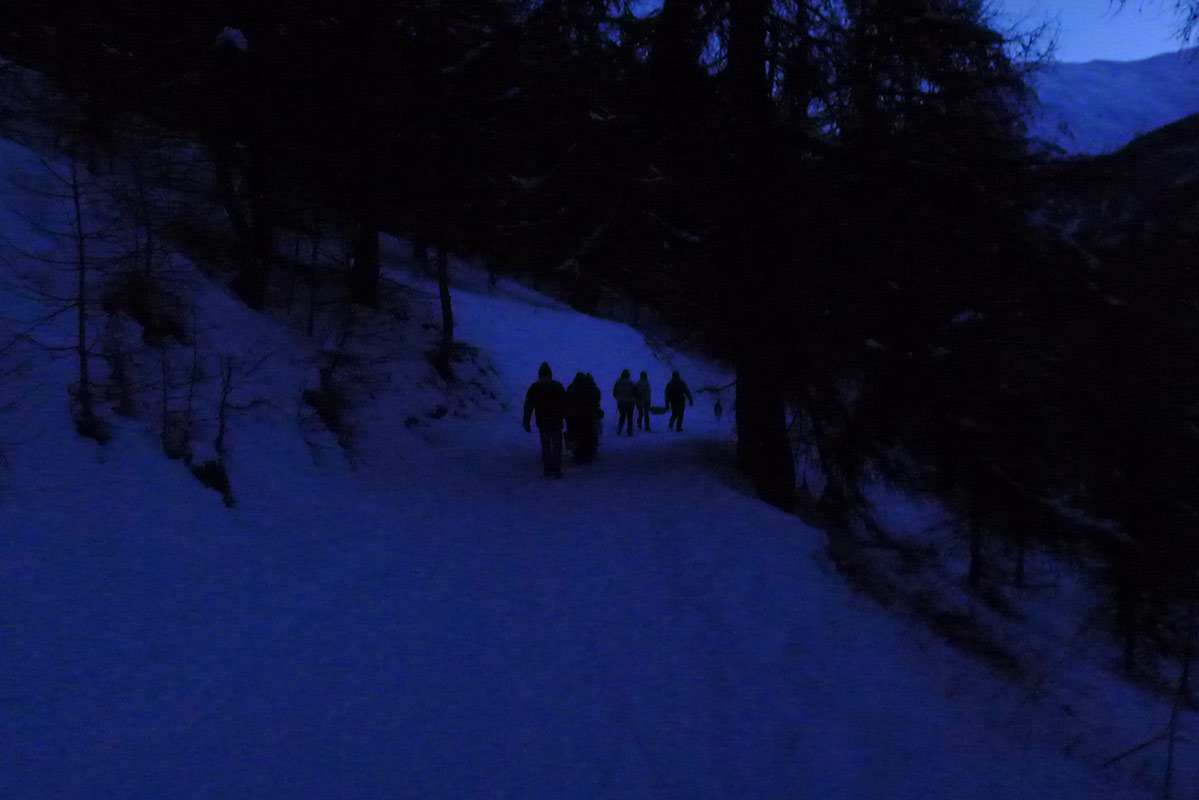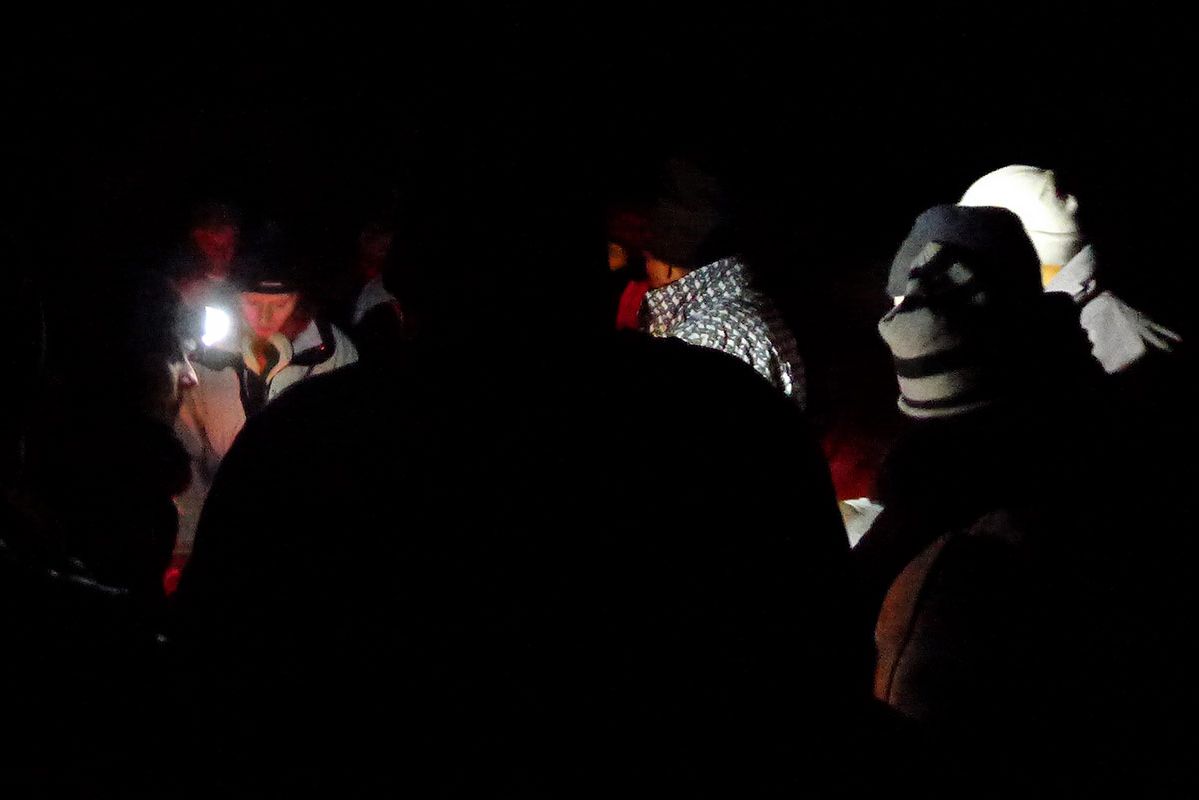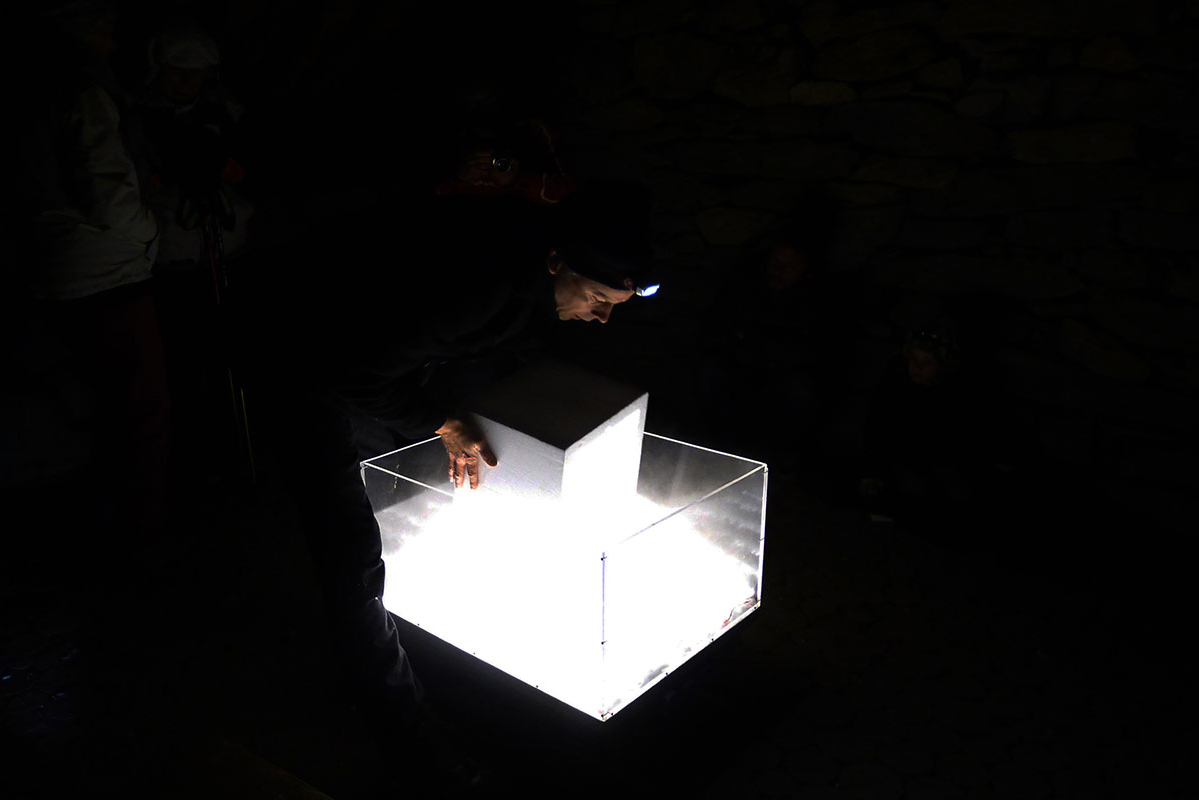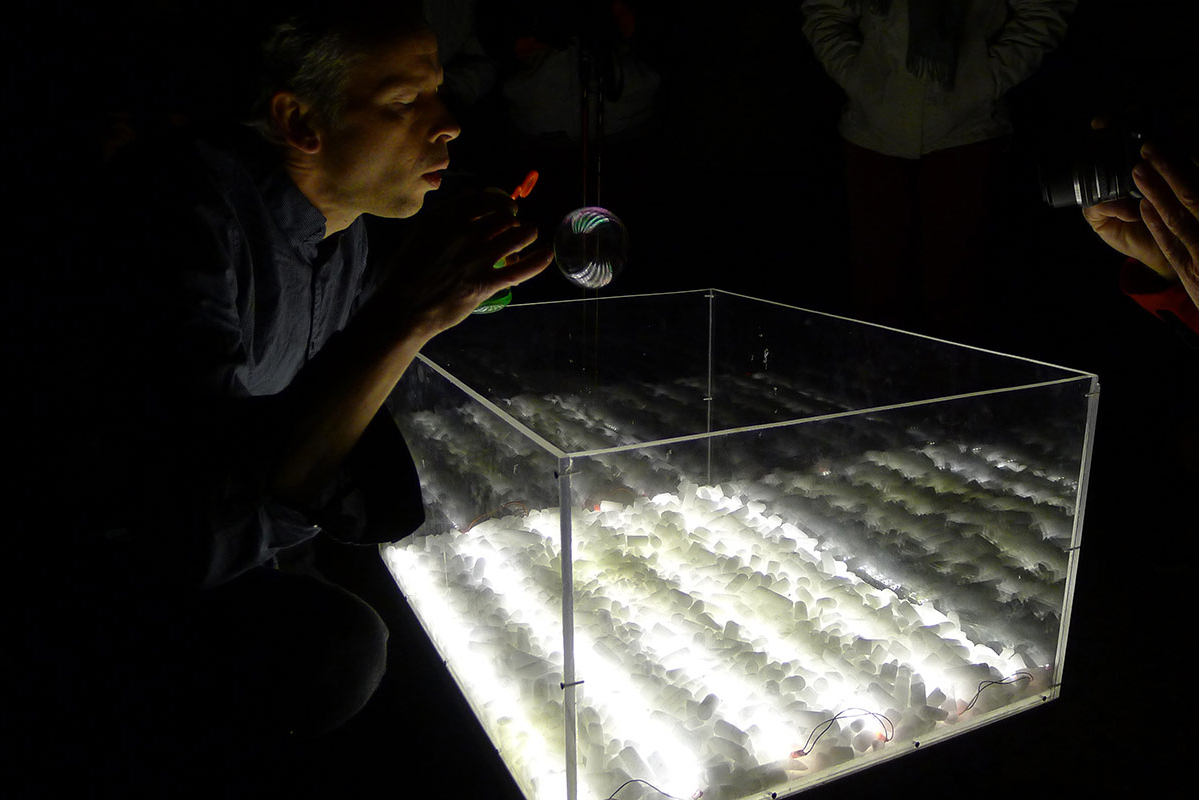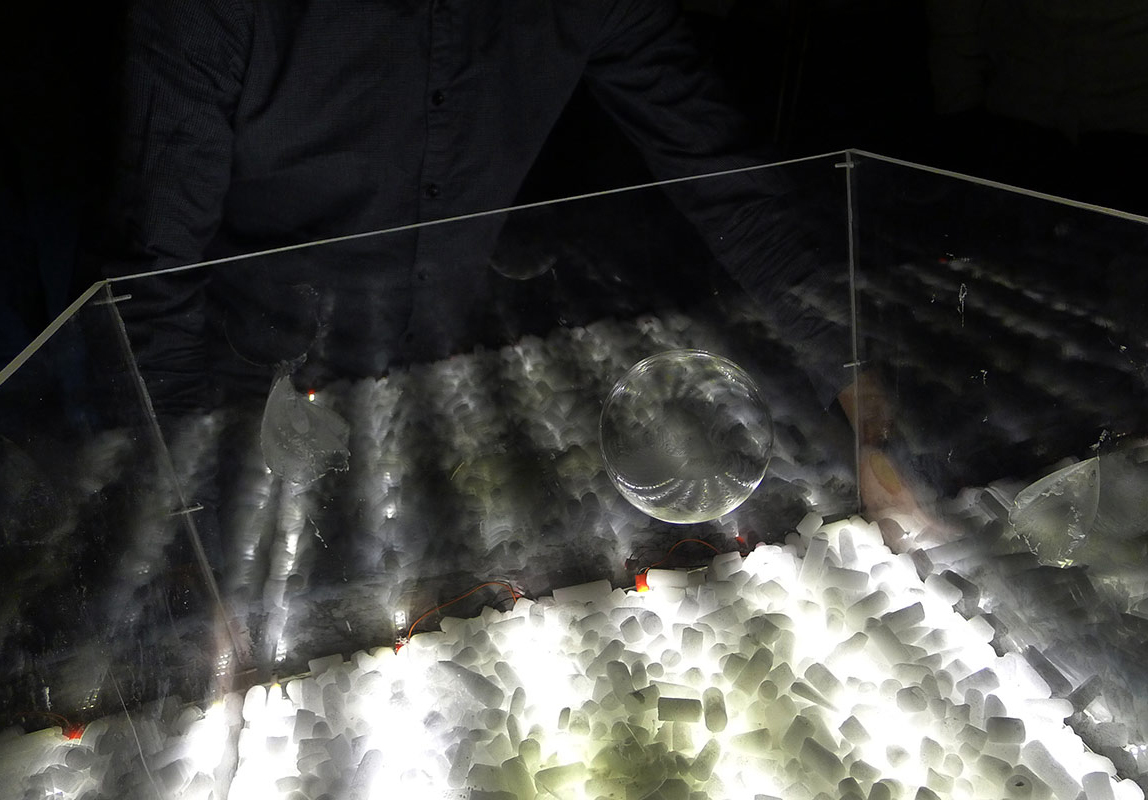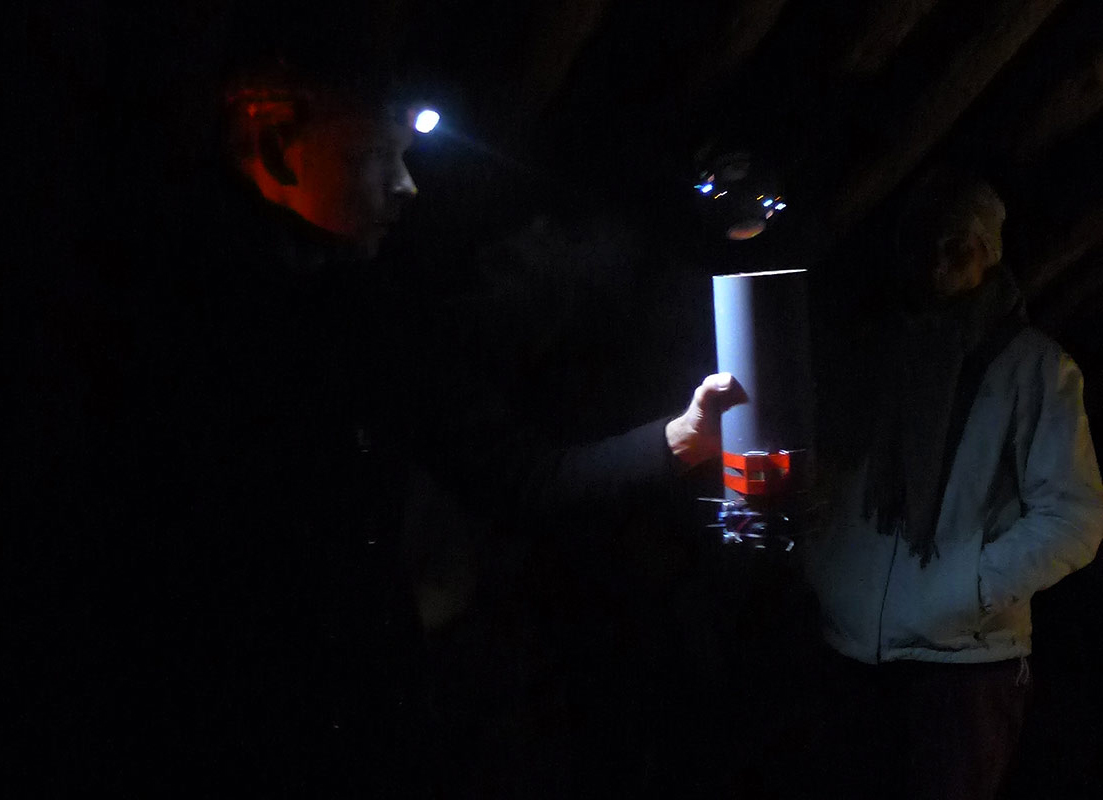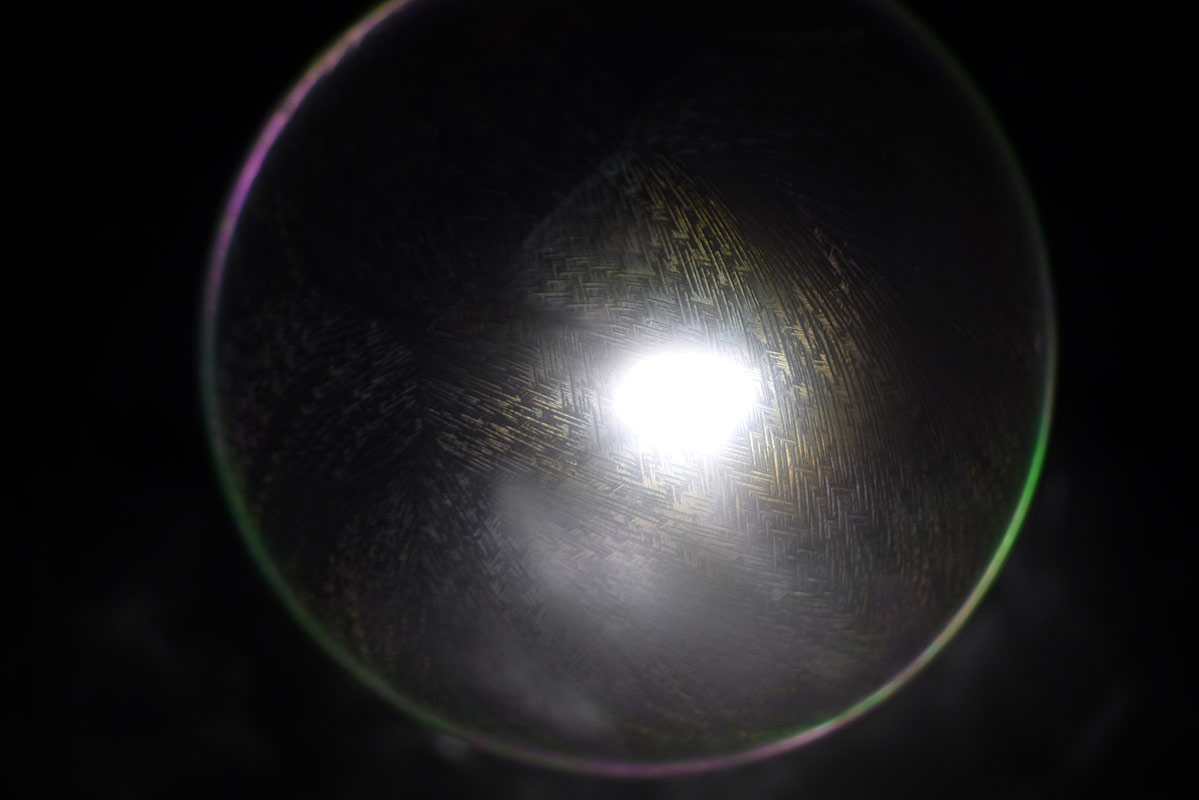
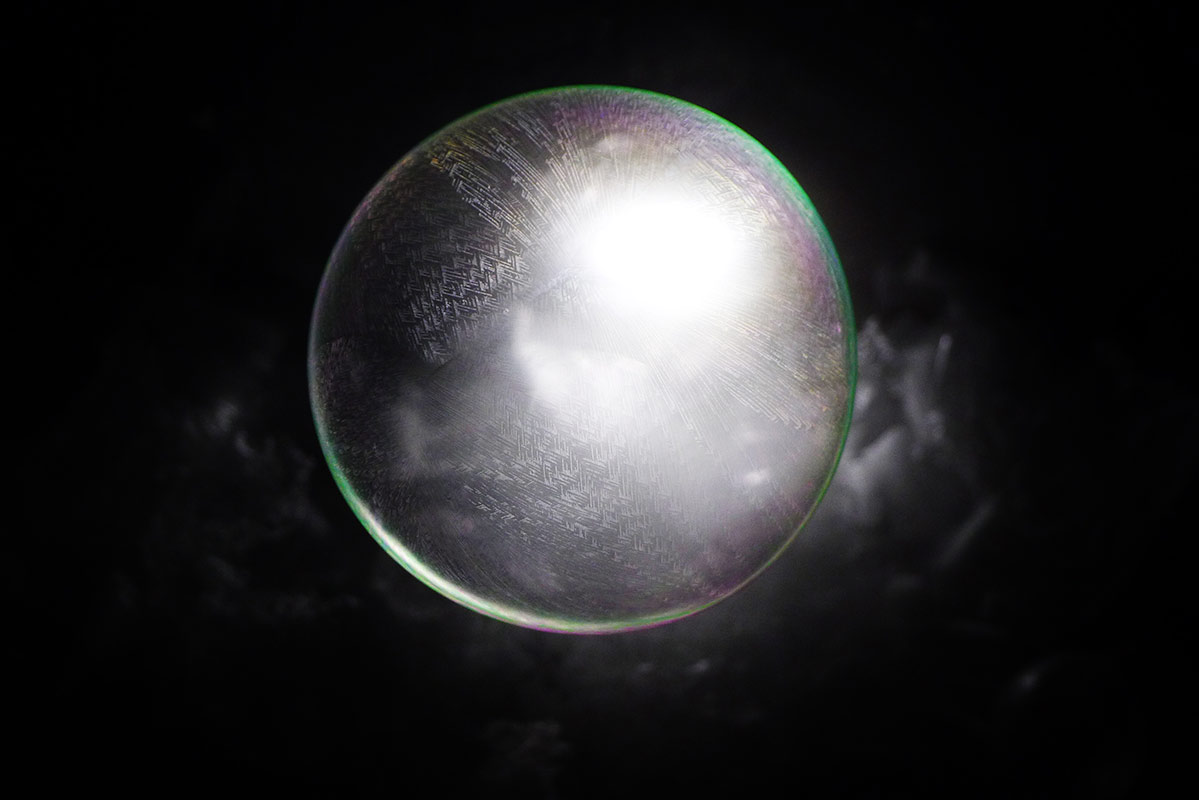
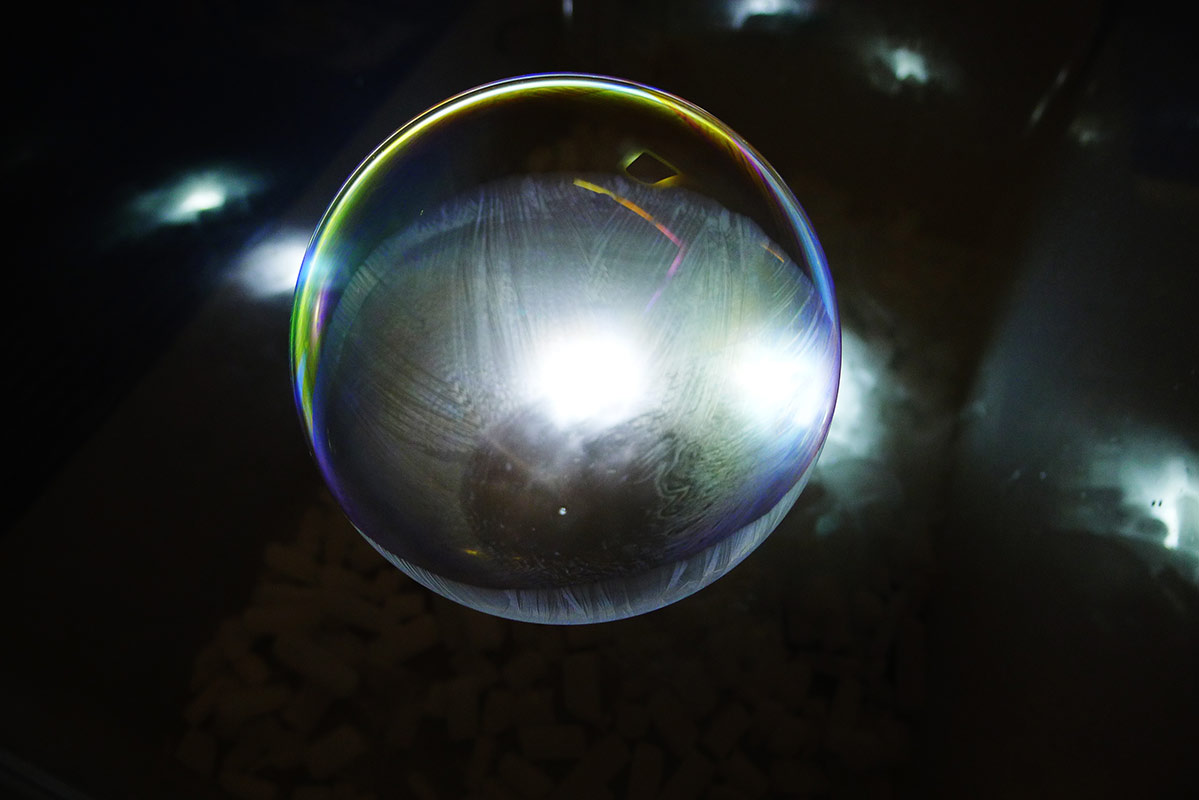
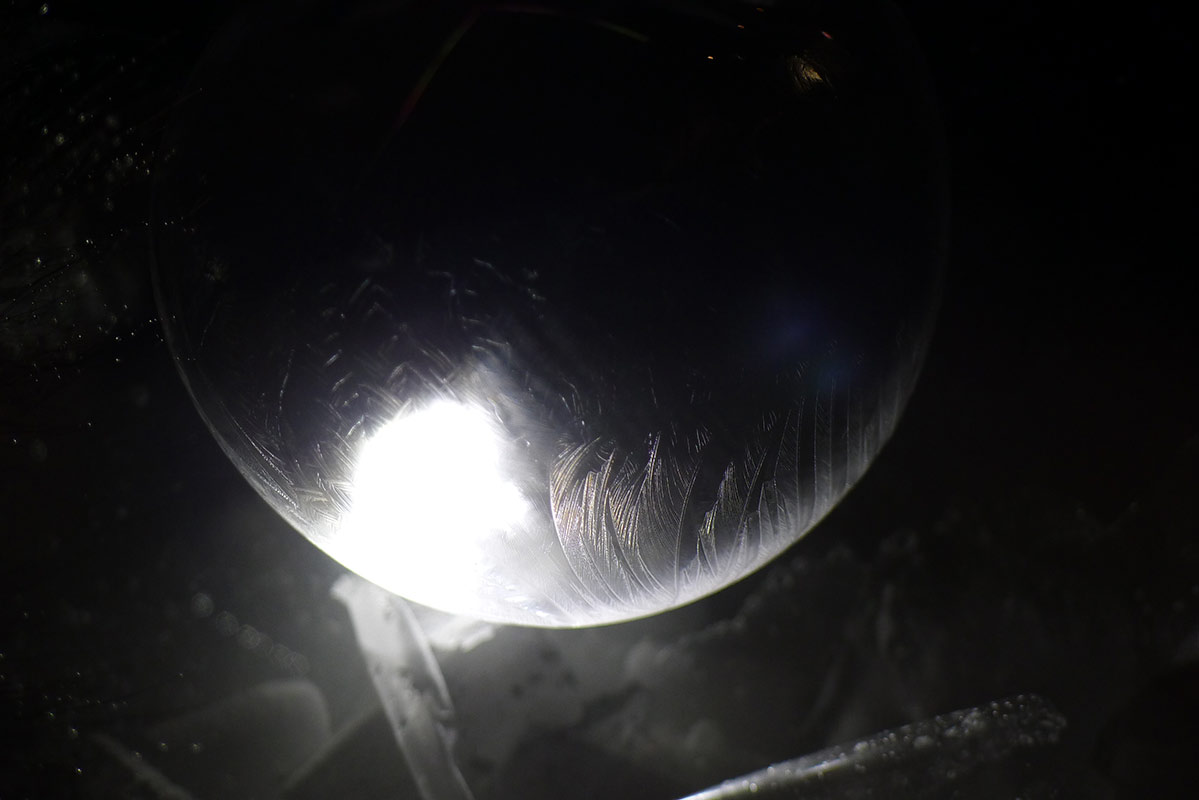
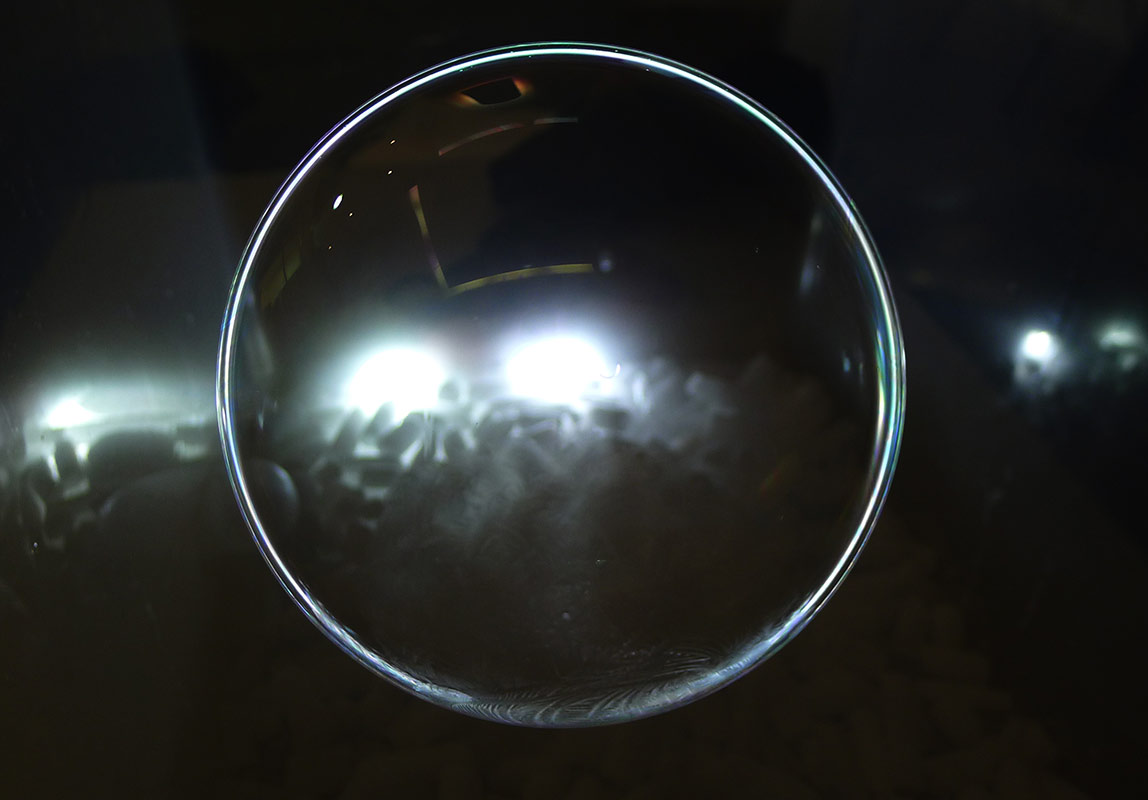
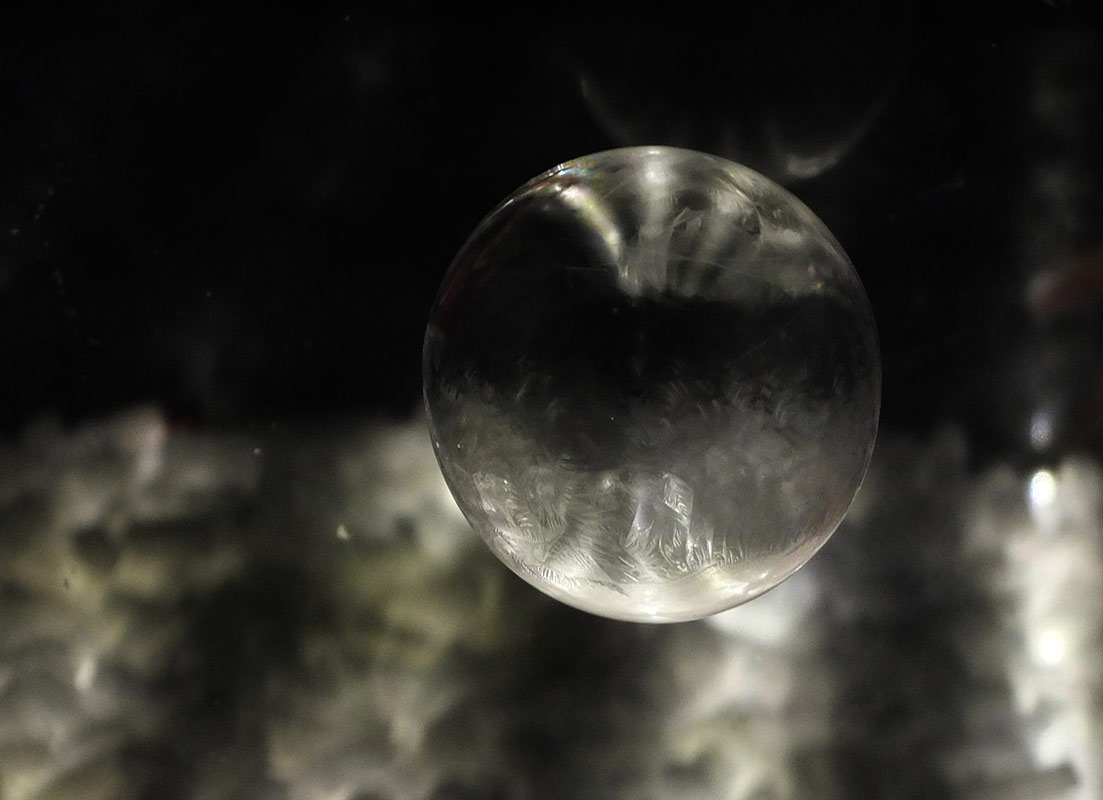
Climate control and the summer of Love / Snow, sledge, wolves and frozen soap bubbles
I imagined the journey of a frozen bubble in a climatized container through the savanna.
I changed idea and instead of producing an encounter between a freezer, jerry cans, generators and a flock
of elephants I chose to show the process and its preparations for this marvel in the most immediate way.
It starts with a sac of cement that falls from the sky and produces a hole in the roof of a house in the suburbs
of Moscow. I'll talk about protection, about bubbles and ideologies, about technologies such as rain dances
and Wilhelm Reich's Cloudbuster as well as about controlled environments such as Monte Veritas and Biosphere 2. It's story about limitations, about control and about liberation. The basic question seems to be:
Do errors, irritations and failures mark the limits of a system or do they constitute its core.
The freezing of a soap bubble works best at temperatures between -15 and -25°C.
I brought dry ice to enable us to see the growth of the ice crystals in case the night wasn't cold enough.
In it's solid state CO2 has a temperature of -78°C. In it's gaseous state it is heavier than the breath contained
in a soap bubble. A bublle will float above the dry ice until gas and breath contained in the membrane have diffused.The temperature rises very quickly from the bottom of the container ( - 78° C ) to the surface of the subliminated gas ( in our case -10 to -15°C) and from there upwards to the end of the walls of the container
( in our case 35cm another 6 to 10° C ). This difference in temperature destabilises the bubbles. The ideal size and soap -concentration depends on the temperature of the environment. At Les Orres at temperatures between -4 and -5° C we found that a 1% solution of DREFT worked best with orange-sized bubbles of the.
A ventilation system made of a battery-driven 12V-ventilator connected to a PVC-tube filled with straws
enabled us to keep the bubbles floating in a homogeneous temperature and made it possible to freeze entire bubbles even though temperatures where no lower than -5°C whereas the ones floating on cold gas were
quite unstable.
Some are dancing at sunrise, some are dancing with the setting sun and some are dancing and singing to make it rain. Just after summer solstice a young man sets fire to the dry prairie. He's representing the god of fire. His body is covered with yellow mud. Others look at him from a distance. They are covered with mud as well, but instead of a burning torch each one is holding a living turtle in their hands. As soon as the prairie starts burning, the Zuni begin to dance, tapping on the turtle's carapace. The dance doesn't stop until the first drops of rain fall on their plains in New-Mexico.
In Tirol and elsewhere in Europe huge piles of hay and branches were burnt to face thunderstorms. The whole community was close to the fire and tapped on cauldrons.
Earlier, king Salmoneus of Elis, a brother of Sisyphus is said to have built a bridge of bronze that he crossed in a chariot at hight speed tearing cauldrons and dried animal skin behind him and throwing
torches during his crossing.
A thunderstorm approaching the ship of the Duke of Estrees close to the coast of South-America lost intensity and dissipated after the ships canons had been fired against it. A method adopted from the
Middle-Ages where hail storms were attacked with arrows.
Fires, torches and arrows have been replaced by canons, cauldrons and bronze bridges by church-bells. Canons were considered favorable to church-bells because they could impact on both thunder and lightning and could also be found in places where churches did not yet exist.
The Arch-Duchess of Austria, Maria Theresia forbid the manipulation of a wet rope attached to a metallic object on the top of a tower during thunderstorms because of numerous deadly accidents.
I'd like to thank Solenn Morell, the CAC Les capucins - Embrun, as well as the inhabitants of the neighboring towns for their invitation and attendance as well as for their capacity of being astonished. The project was funded by the FNAGP and the CNAP.
It's hard or even impossible to tickle yourself, except for someone schizophrenic.
In a book from the end of the 19th century I read that very low temperatures should be used to go outside,
even though it seems difficult to imagine yourself leaving the fireplace : very low temperatures allow to attend
to the transformation of the membrane of a soap bubble into a spherical crystal. I wanted to use this phenomenon for a sculptural demonstration and had been looking for a narration, for a context, for an environment. I didn't want to go to the Bering Straight or to Lake Vostok in Antarctica, but hesitated for a while with the summit of Mount Kilimandjaro.
